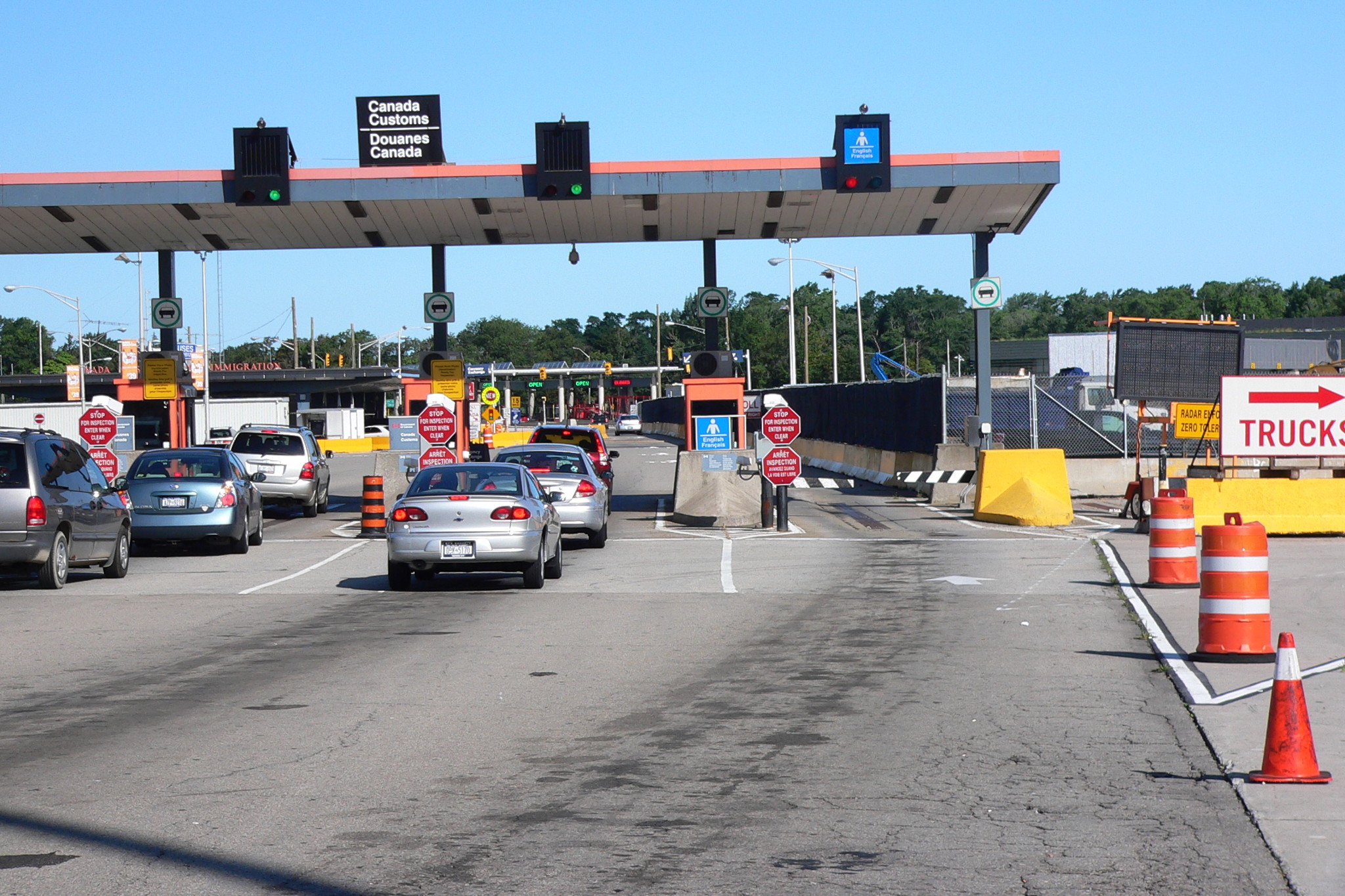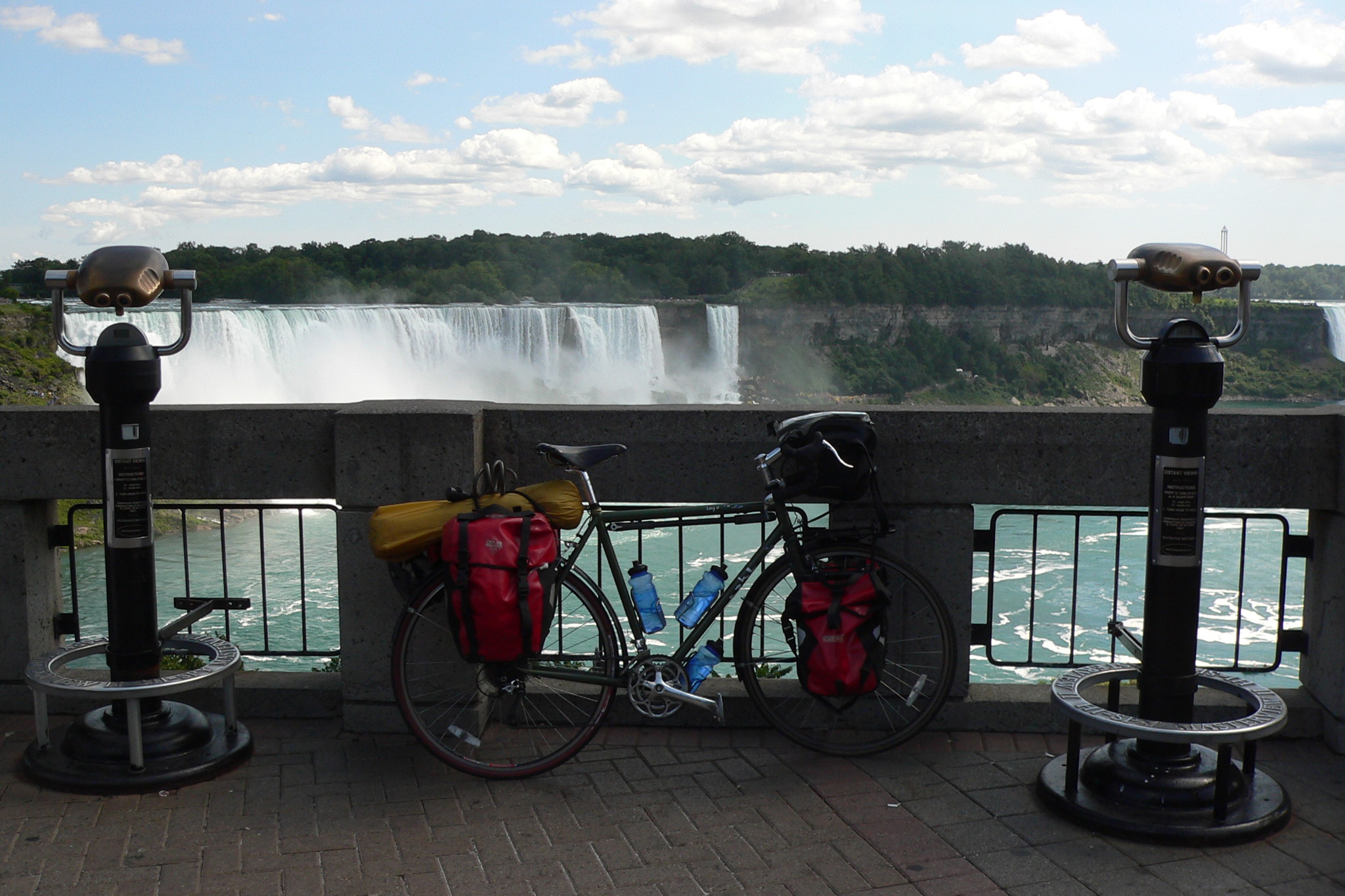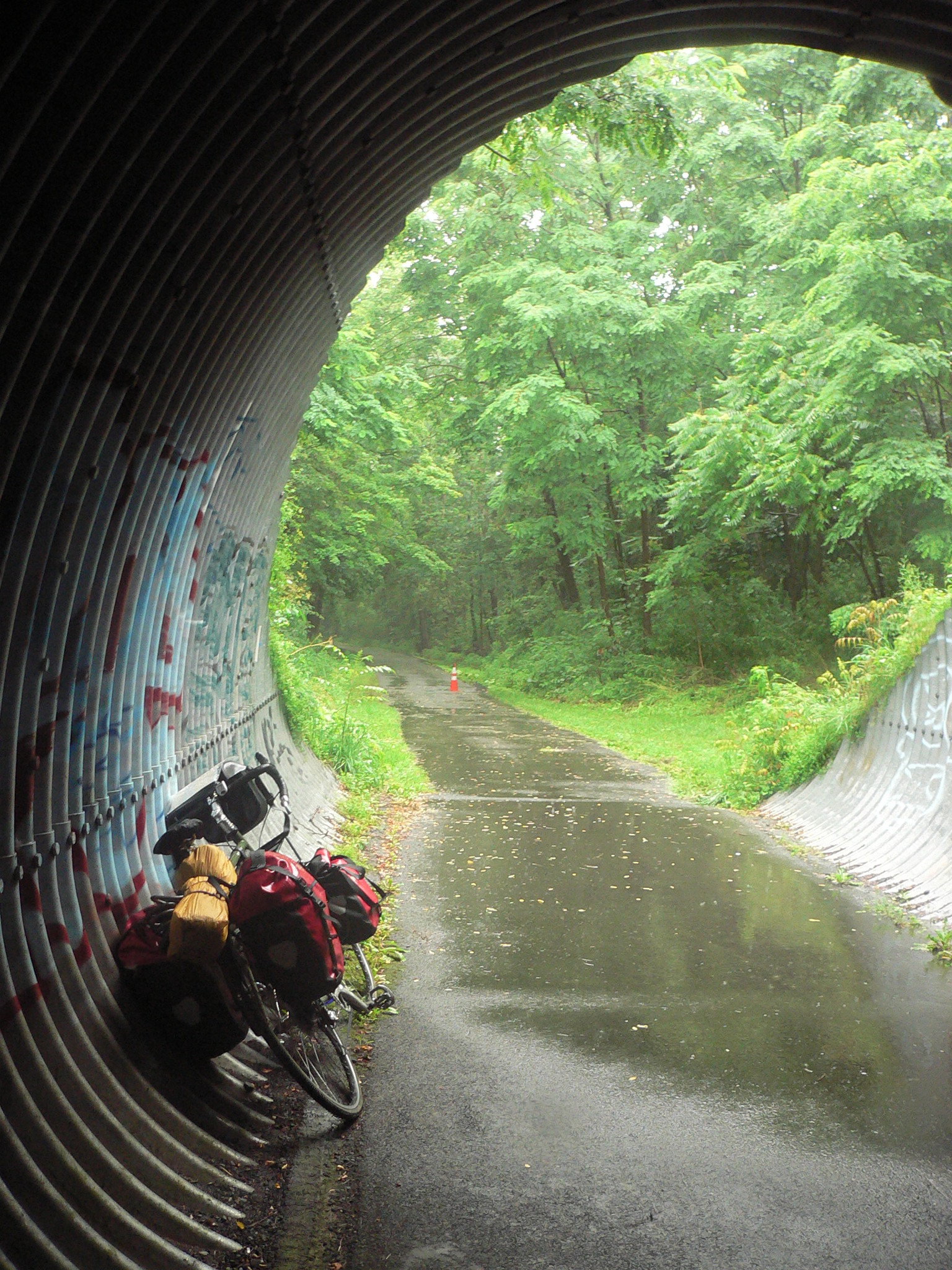The Soft Music Of Spokes
A few years ago I did my longest solo, self-supported bike trip: nine days from Boston to Niagara Falls. When I approached the Niagara River, I crossed into Canada. The border crossing was on a multi-lane divided highway in front of a bridge across the river; there was no way around it. So I merged into the highway, feeling somewhat out of place among all those cars and trucks.
The Canadian border guard looked at me and my bike with a clear suspicion.
“What’s the purpose of your visit to Canada?”
“You see, I am riding my bike from Boston to Niagara Falls.”
“Why would you do that?”
That question had taken me by surprise. I was not sure I honestly could articulate an answer, but even if I could it probably would be the kind of answer not working well at a border crossing.
The border guard had eventually let me through (but only after collecting the 50 cent bike toll, payable in either currency, only cash accepted). He was neither first nor the last to ask the why question, though. Here follows my attempt to answer it.
People like to travel. That’s natural, right? I am sure that you too, gentle reader, have enough friends who get excited of a mere thought of flying to a new country, or flooring the gas pedal at night on a empty, never-ending highway, or (if they are perhaps somewhat more old-fashioned) entering a sleeper car of a long-distance train, arranging the suitcases in the compartment, taking seats by the window, anticipating cities, fields and mountains to roll by. Friends who follow with their eyes white contrails of the tiny, barely visible planes and shining train tracks disappearing into the horizon.
When I start a bike trip, this is how I feel. Whatever worries I have had past month—past day—past hour—past minute—be it stress at work, loss of meaning of life, packing anxiety or just being lazy and wanting to lie down on the bed and close my eyes—all that disappears the moment the tires touch the pavement, the feet fuse with the the pedals, the white fence of my home stays behind. Like when the movie editor cuts the film and glues two entirely different frames together, the switch is complete and instantaneous. I am on a mission, I have new life now. New feelings. New goal.
How do you get yourself across those hundreds of miles between point A and point B? How do you bridge the chasm between here and there? Could not be simpler: you push you left pedal with you left foot, and then you push your right pedal with your right foot. Left, right. Left, right. Long-distance biking is a very meditative endeavor, like walking and running. No wonder they all thwart depression in a way cars and planes don’t. Left, right, left, right, concentrate on the task at hand, the space is soft and malleable, it expands beyond the horizon and contracts to encompass just the front wheel. You are not in a hurry, you don’t worry about anything, you don’t even think about anything in particular. Space becomes one-dimensional, merges with time along the line of the road, your soul loses itself, melts into the infinite miles, the miles behind and miles ahead. The body is pushing, the soul hovers mid-air on its own, floats weightless along that line connecting points A and B. This is not happiness yet, but rather the feeling of a deep, complete satisfaction. Life (thinks your soul) the way it is meant to be.
It is very important to have a clear goal for the journey (just doing a loop for no reason doesn’t appeal that much to me). It also helps if you can start from home. Then the entire trip is your personal achievement, all those miles from A to B are yours and yours alone, you took them, embraced them, biked them all with your stuff in the bike bags on your rack. The trip becomes whole, complete. It is a very important feeling to me, both during and after the trip. The sense of the complete ownership, so rare in our life. Others start their vacation with buying a ticket. I start my vacation with rolling my bike beyond the fence.
And then there is the opposite of meditation: interruptions. It’s not always convenient to stop a fast car, and you will probably miss them anyway: a pretty roadside flower, a brook with a little waterfall hidden by the trees, a funky farm store. It does not take much to stop a bike. When you bike, you can go places, but things stay sufficiently small and slow to keep the scale human. There is no barrier between you and the rest of life. You are always in the front row, always have the 360 degrees view, always breath the fresh air. Whatever happens outside: people, houses, fields, mountains, the summer heat, the coolness of the sunset, rain, snow—is happening to you. When you drive a car, you subtract yourself from the landscape. When you ride a bike, you add yourself to the landscape.
Bridges and skyscrapers have their own frequency. Likewise, there is a certain rhythm to life and to nature, a certain frequency of vibrations. It is natural to us, to our bodies and to our souls, but it is too soft, way too soft. And so we lose it behind the much more powerful vibrations of work and family, driving and flying, watching TV and browsing the net. But then you make an effort to break with all that, pack two sets of clothes, a toothbrush and a tent into your bike bags, roll the bike outside, get lost in the endless miles down the road, listen for life’s vibrations. And the time comes, the pulse of the earth suddenly resonates with your own, you hear it loud and clear in the deafening silence, feel with your entire body. Left, right. Left, right.
Photos: The Lewiston-Queenston Bridge border crossing; Niagara Falls, Ontario; The Mohawk-Hudson River Trail.
Subscribe via RSS


